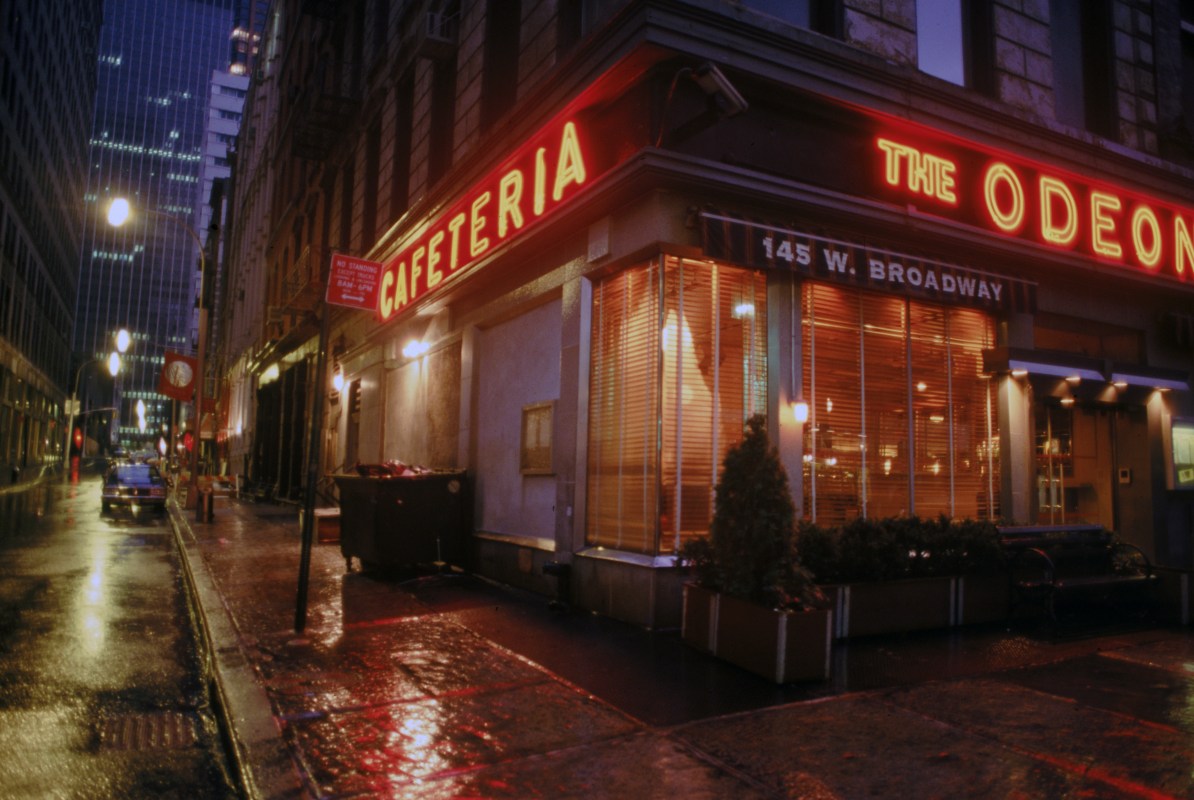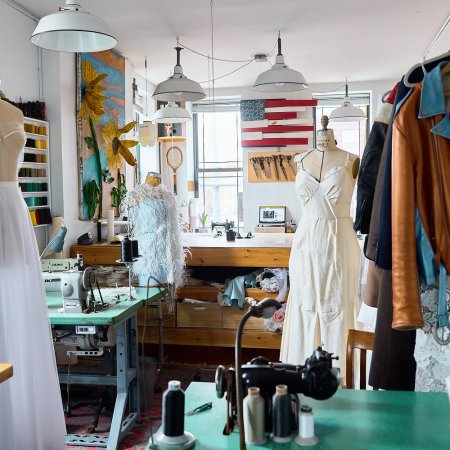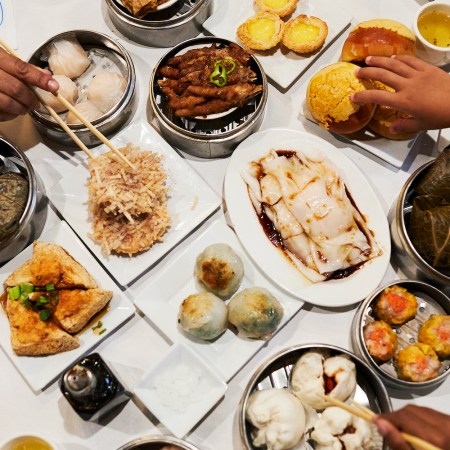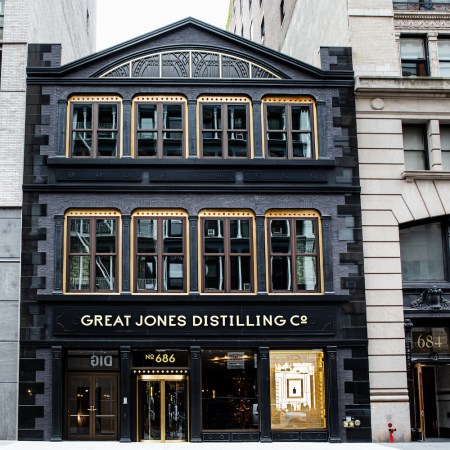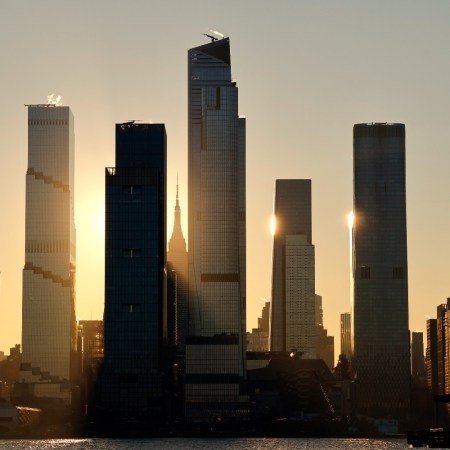Sidling up to the mahogany bar of The Odeon, then later, slipping into a low red banquette, is one of the New York dining scene’s enduring pleasures — more so all the time, as downtown Manhattan becomes a haven for pastel-hued matcha bars and millenial-leaning cafes. While the iconic bistro, which has made its home on a buzzing Tribeca corner since the fall of 1980, is open (and busy) all day, dinner at The Odeon is hard to beat. The most delicious menu items are the heavier, classic brasserie dishes: the kind of things you’d best enjoy when you can make your way at a leisurely pace. The steak frites, croque monsieur and burger all come out perfectly executed and devoid of any pretense or house twist. Plus, the constant hum and clink of the place in the evening, as the last bits of sun slant through wooden blinds and the bottles of wine being ferried across the terrazzo floor speed up, feels so perfectly, quintessentially New York City.
The first time I visited, I was just out of college and my glass of Sancerre and steak tartare were disproportionate to my sad salary; still, I lingered as long as I could into the evening, and planned to come back as soon as it didn’t relegate me to a diet of yogurt and coffee for a week to do so.
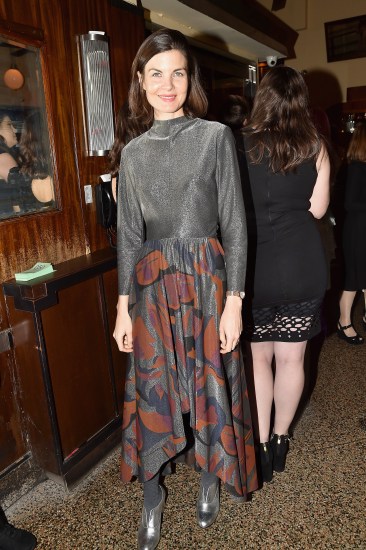
On this visit, I pass the sidewalk tables of families from the neighborhood enjoying French fries with milk (for the kids) and French fries with burgers and Martinis (for their parents) and slip through a duo of stylists up from one of Condé Nast’s women’s mags, looking less sulky than usual in the glow of The Odeon’s neon sign. At the host stand, Roya Shanks, the maitre d’ of nineteen years, greets and directs guests to the two young hosts who stand just slightly behind, at her wings.
Shanks, who can be easily spotted as she glides through the crowded room thanks to her colorful wardrobe of vintage dresses, is the most well recognized of a staff with little turnover — staying 10, 15, 20 years at The Odeon is the norm. It’s easy to feel like you’re having dinner in her extended dining room–regulars give her a kiss on the cheek or a hug on their way to be seated, or these days, exclaim about her pregnancy (she’s due this summer, and is as fabulously dressed as usual, bump and all.)
I get the sense, as I pass time at the bar, that the crowd is almost as happy to be waiting for a table as they will be when they have it. The room is set up cafeteria like: big and open, dotted with small tables and lined with a row of banquettes, the only barrier to sight a small glass partition by the kitchen, where the quick-footed staff weaves in and out. It’s the perfect spot for enjoying the crowd. Too unpretentious to be classified as a see and be seen spot, but still, after nearly 40 years in business, it’s a place where you will inevitably catch a few familiar faces if you spend enough time in any creative field.
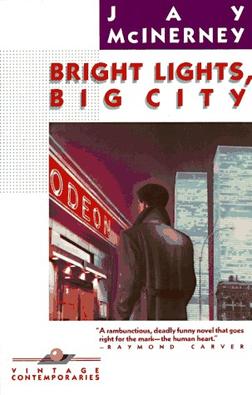
The Odeon is rarely left out of a tale of NYC’s 80’s nightlife; the restaurant is famously emblazoned on the cover of Jay McInerney’s novel Bright Lights, Big City. The bestseller, which tells the story of New York’s cocaine-fueled nightlife in the decade, memorialized a period in time that vanished as aids and drug related deaths ravished the art community. There was another landmark on the cover: the Twin Towers, looming behind The Odeon.
“The regulars then were the downtown parade of fancy pants: lots of SNL people, artists, show biz types; people who liked great fare in strange places, as Tribeca was a no-man’s land,” director Amos Poe tells InsideHook. Poe first came with Keith McNally shortly after the place opened, and held his wedding reception to artist Sarah Charlesworth in the restaurant. McNally had opened The Odeon with his brother and future ex-wife Lynn Wagenknecht, who has long since bought out her partners and runs the restaurant solo. Like many other early regulars, Poe can still be found many nights enjoying a frisee salad or a steak tartare. “The beauty of The Odeon is that it has aged super gracefully,” says Poe. “The food’s still good; the ambiance stellar still.”
What sets The Odeon apart from other haunts of parties-past is its ability to stay constant without becoming kitsch. Without knowing the restaurant’s history, a present diner won’t imagine Basquiat or Warhol round the tables, but will probably enjoy the meal just as much as they did (or nearly as much; the resto is definitely more tame now, and closes earlier than it did in the early days.) Few places from that era still hold pull, and fewer still have survived. Neighborhood mainstay Montrachet, which once boasted one of the best wine lists in the world closed its doors in 2006; Chantarelle, with its menus designed by artists and regulars like Cy Twombly and Chuck Close, shuttered in 2009.
As I’m was ushered from the bar to a table, I pass by literary ingenue Tavi Gevinson, deep in conversation with a sculptor. A group of architects from a nearby office groan about heading back to their desks for the night, while at the booth next to me, a father and son duo sling their tennis rackets under the table and decide on a pair of burgers, still in their shorts and trainers. It strikes me that I’ve never been to a New York restaurant with such a diverse group of diners — not in terms of ethnicity (Tribeca is still relatively pale) or income (the steak frites is forty dollars, after all) but in vibe, age, assumed profession. Tribeca, once home to artists like Barbara Kruger and Richard Nonas, has now become pretty square; strollers have charged in en masse, crisp blue button downs dot every corner, and any glimmer of cool has left, except, of course at The Odeon.
Related: A Night at James Bond’s Favorite London Martini Bar
My dinner that evening was like every meal at The Odeon: and that’s not to say it wasn’t memorable, just that it’s consistently good, and rarely surprising. Plump Island Creek oysters, a bright piece of cod from the list of specials, a few bites of the hot fudge sundae passed around the table: unfussy, elegant food. To be honest though, I would eat here even if the food weren’t quite as good — at least, any time I felt the tug of somewhere out of New York, or on any particularly bad or particularly great day, a day that needs a familiar favorite to top it off. “The Odeon has always been a refuge from the sometimes mercurial fashions of restaurant dining,” Wagenknecht tells me, looking back at the past four decades in business. I’d go as far as to say it’s a refuge from the city at large as well.
Every Thursday, our resident experts see to it that you’re up to date on the latest from the world of drinks. Trend reports, bottle reviews, cocktail recipes and more. Sign up for THE SPILL now.
